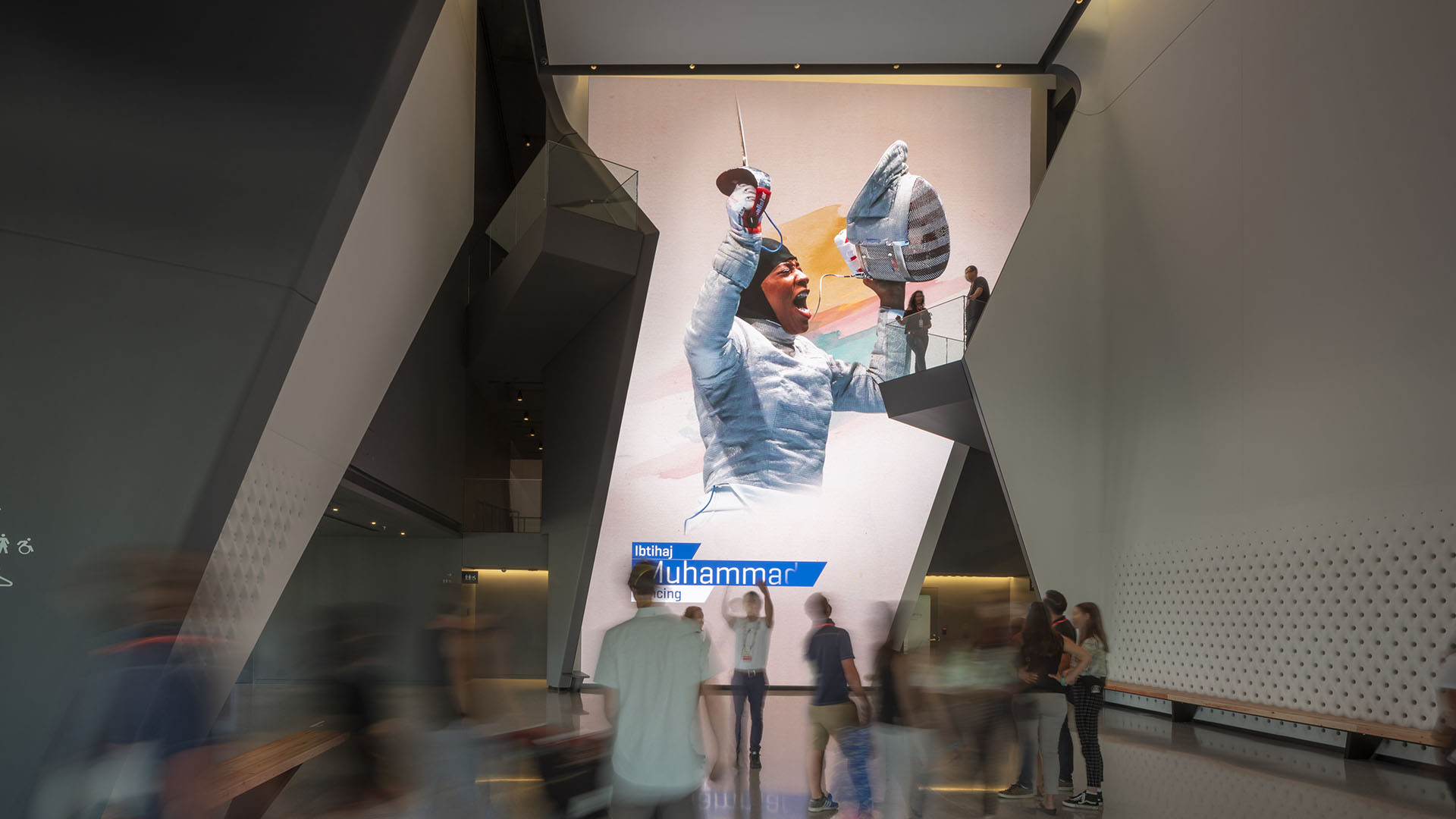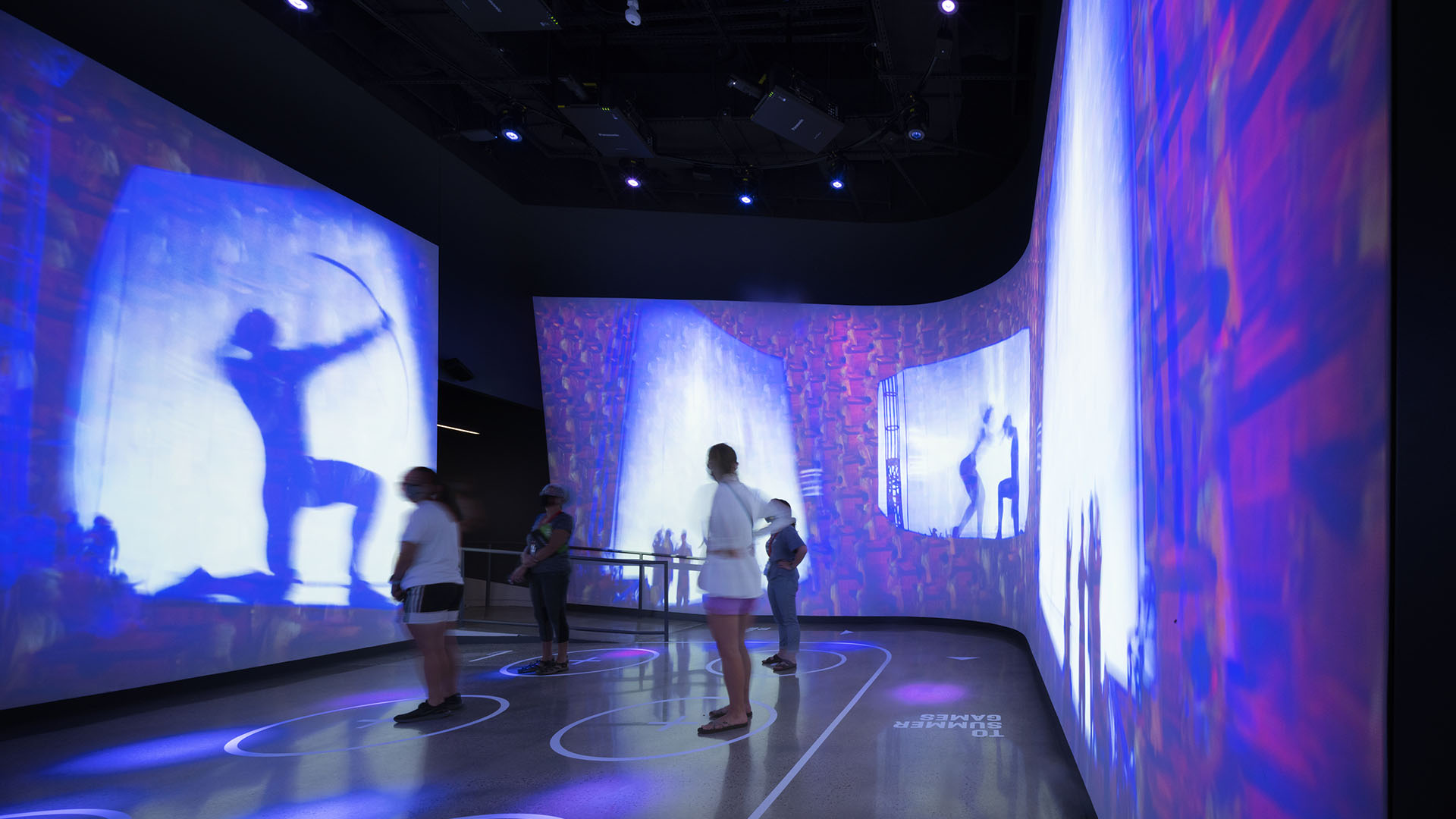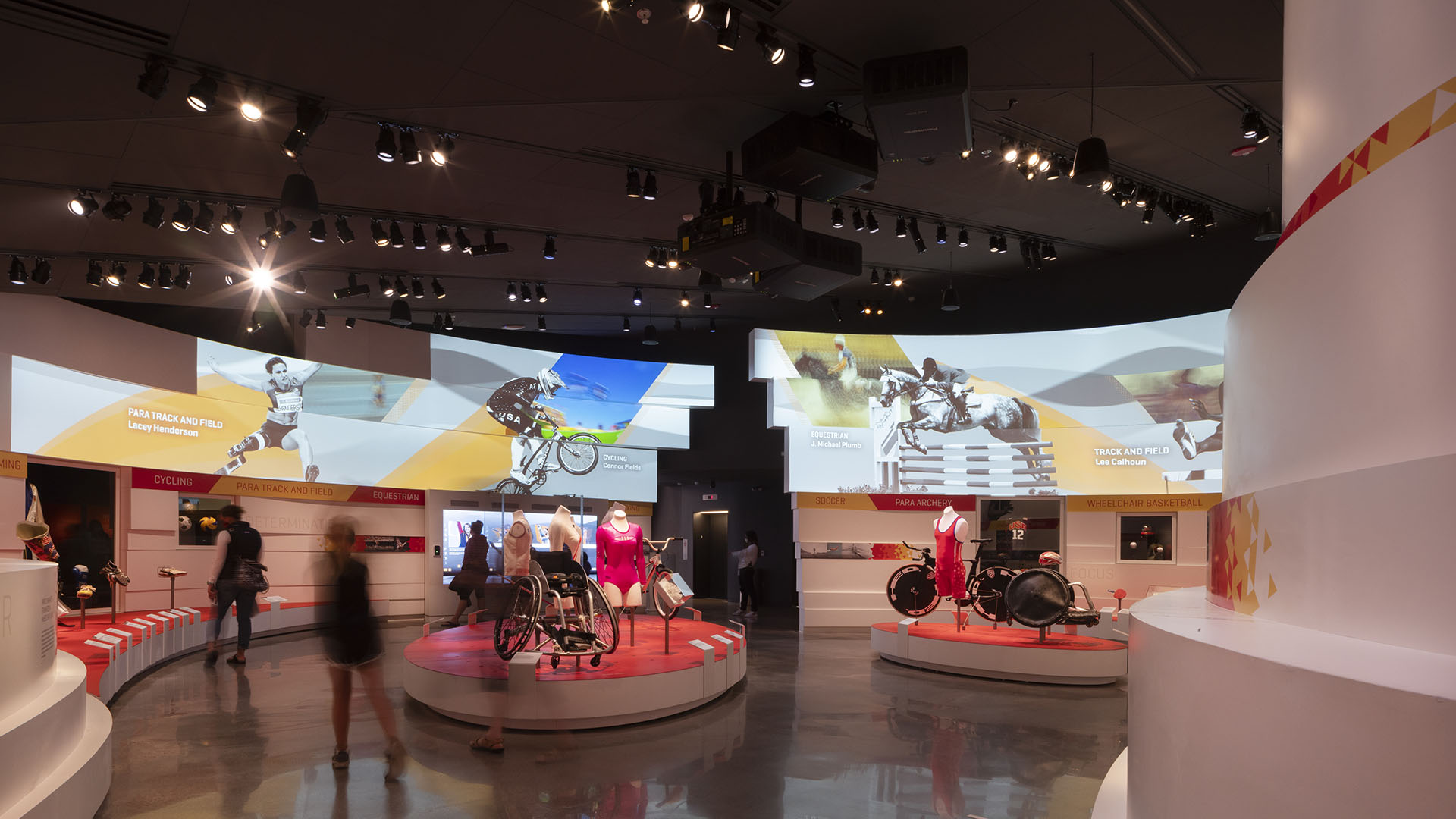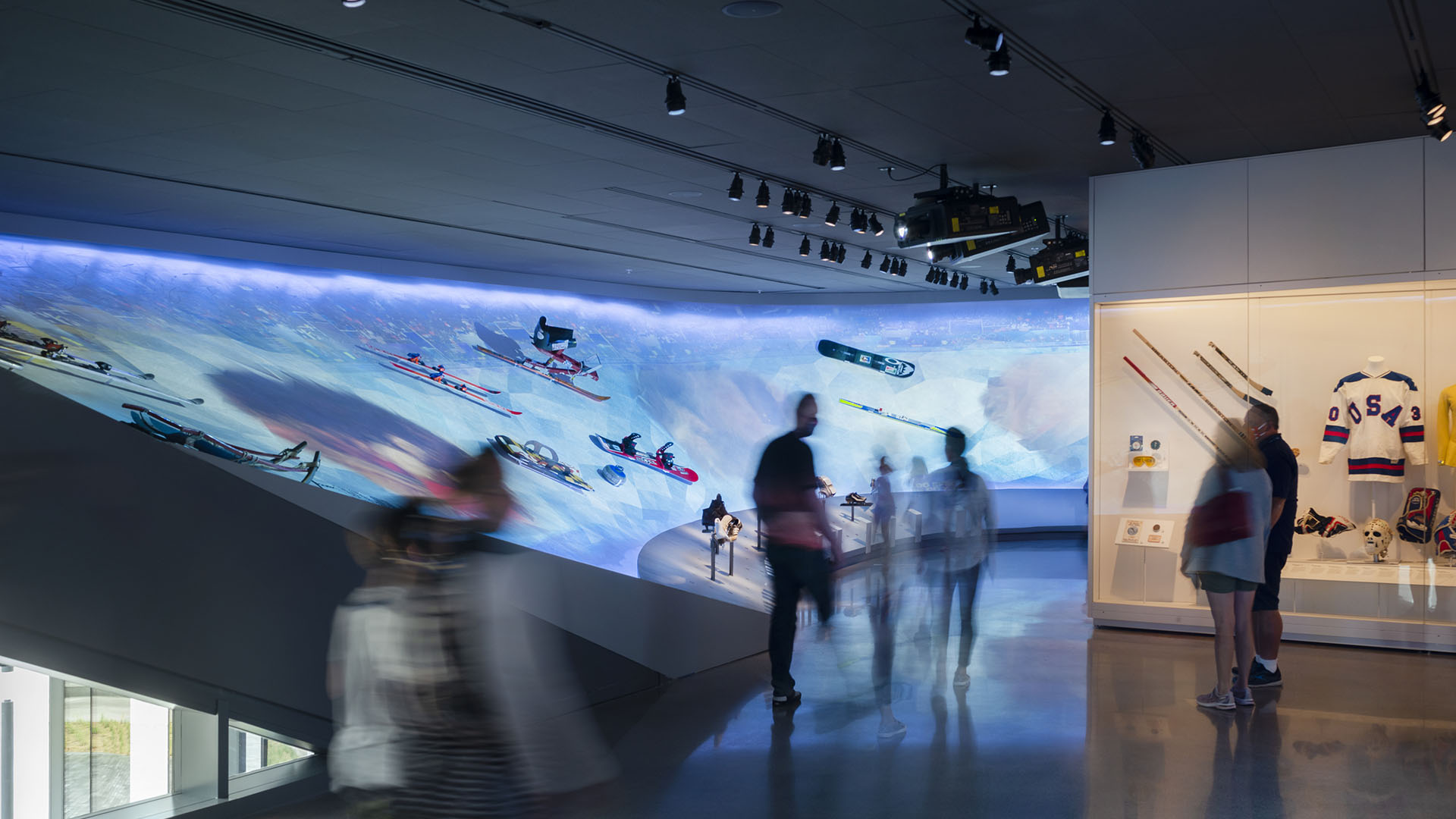U.S. Olympic and Paralympic Museum
The U.S. Olympic and Paralympic Museum celebrates the momentous achievements of Olympic athletes, presenting their stories through a groundbreakingly immersive museum experience.
Agency
Gallagher & Associates
Practice Area
Client
U.S. Olympic & Paralympic Museum
Industry
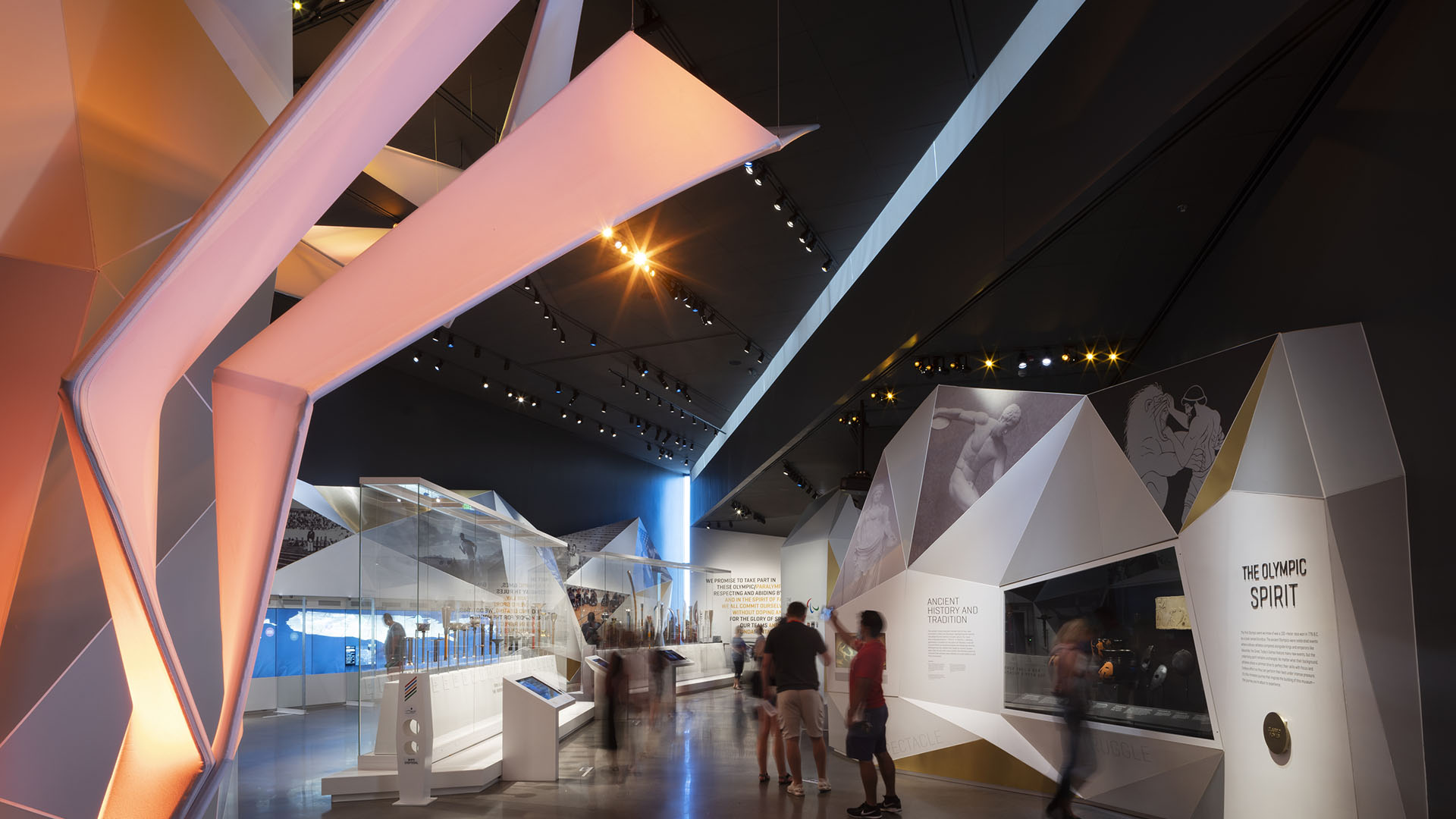
The Challenge
The design team envisioned a museum that genuinely reimagined what it means to be accessible for all. This required the highest level of collaboration between design, fabrication, media, and interactive developers to create a seamless, personalized experience for each guest. Through an iterative design process, rapid prototyping, and diverse user testing groups, the team and their partners set a new benchmark for accessibility through universal design.
Project Vision
Taking inspiration from race timers and distance markers, clean typefaces create a cohesive graphic language. The iconic color palette of the Olympic rings is a springboard for bold and engaging graphics, with metallic accents reflecting the gold, silver and bronze of the medals. Through a creative process rooted in iteration and testing, solutions were developed out of rapid prototyping and diverse user testing groups. Along the way, the development team invited Olympic and Paralympic athletes to test interactives at each phase of the process. The insight gained from these efforts allowed the team and partners to achieve a new benchmark for accessibility through the use of universal design.

Dramatic main atrium space
Nic Lehoux

Nic Lehoux

Nic Lehoux

Nic Lehoux
Design + Execution
At registration kiosks, guests set their user preferences which are then tied to an individualized, RFID- powered badge. This digital fingerprint lives in the background of the experience and enables over 100 sensors throughout the Museum to respond and adapt to each person’s unique preferences and self- identified abilities. These sensors automatically calibrate to visitor needs for all digital interactives such as The Lab, where digital overlays activate and highlight specific equipment used by Olympic or Paralympic athletes. Displays allow visitors to investigate different components of the equipment and feature clips of trainers and athletes showing equipment in action. This hands-free experience is controlled through a motion control/depth sensor interface. User profiles tied to each RFID badge trigger visitor preferences, such as increased volume, higher contrast visuals, or larger text size.
In addition to RFID sensors keyed to specific user profiles, overarching design elements throughout activate to fit various comfort and ability levels. Tactile floor strips align to trigger points for audio descriptions for sight-impaired visitors. All videos feature captioning and ASL interpretation along with narration for hearing-impaired visitors. Universal reach and sightlines across all interactives ensure that each visitor can access content from a comfortable vantage point.

Nic Lehoux

Nic Lehoux
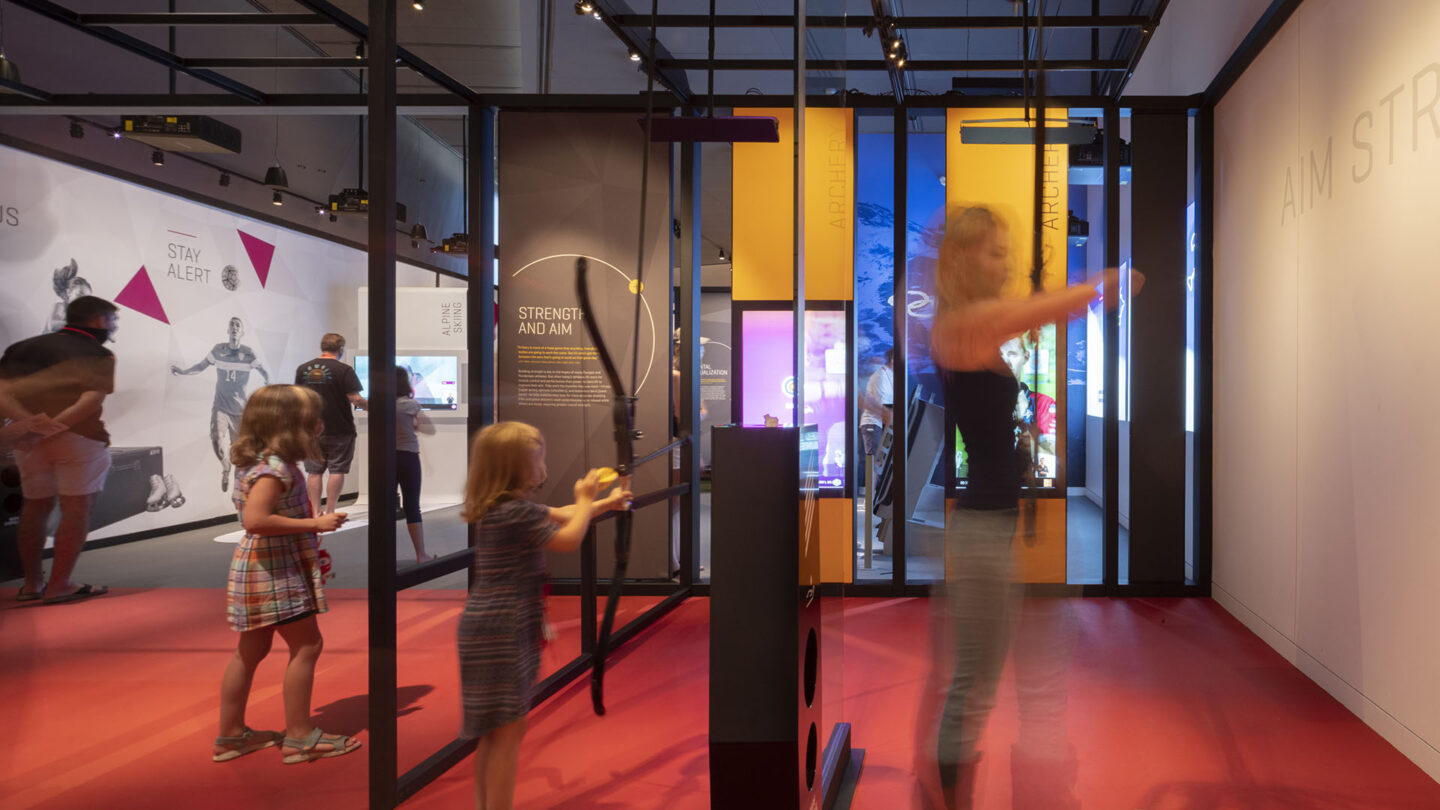
Nic Lehoux
Project Details
A striking synthesis of architecture and exhibition.
Universal accessibility of all the interactive experiences are wonderful accomplishments in this exhibition.
Design Team
Gallagher & Associates
Collaborators
CREO Industrial Arts (exhibit fabrication)
Diller Scofidio + Renfro (architect)
Anderson Mason Dale Architects (architect of record)
Gallagher Museum Services (owner’s representation, operations management)
Barrie Projects (feasibility study consultant, content & artifact acquisition)
CentreScreen (media & interactive development)
Kiss the Frog (media & interactive development)
Available Light (lighting design)
Institute for Human Centered Design (accessibility consultant)
RGLA (retail & cafe design)
Photo Credits
Nic Lehoux (photography)
Sebastian Fidler (videography)
Open Date
July 2020
